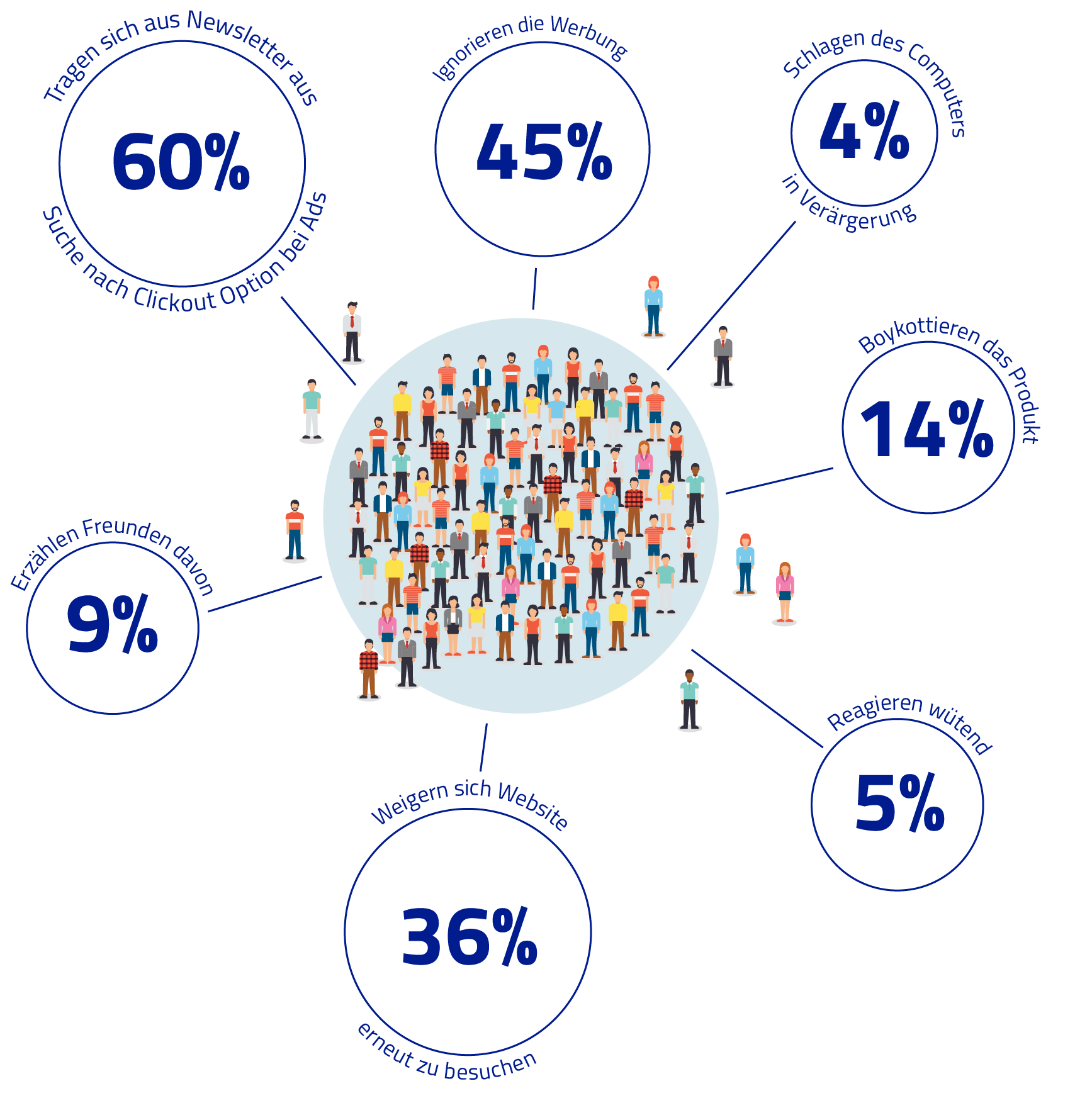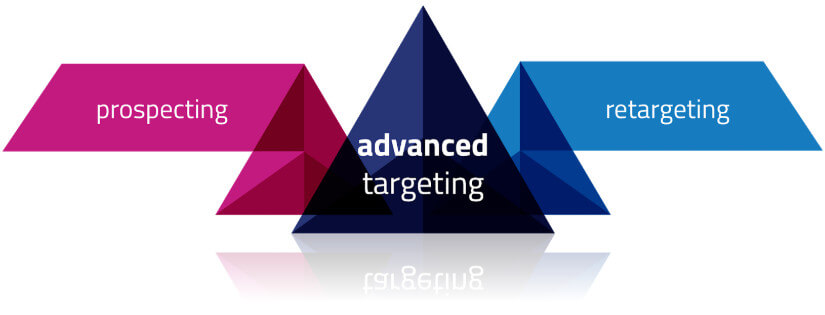
Retargeting Guide: Step by Step to a Perfect Retargeting Strategy
For some time now online marketing has been called "Back to the Roots". One of these roots is retargeting, also known as remarketing in the Google-Universe, which follows a simple strategy: With the help of personalized advertising banners, visitors who ditched your website are retrieved in order to finally encourage them to buy. As is so often the case, there are also some pitfalls with seemingly simple procedures that every advertiser should be aware of. Well-conceived retargeting campaigns are characterised by excellent return and closure rates as well as a high ROI. So it's worthwhile to go troubleshooting. We will shorten your way and show you step by step how to use retargeting successfully and target-oriented with simple means.
Two guiding principles in advance
It is a question of when
Regardless of what kind of retargeting strategy you pursue, timing is always of the essence. The point in time when marking begins as well as the recency and frequency need to be taken into account. How long after visiting a page the user is approached again (recency) and how often the advertisement is displayed to him within a given time period (frequency) both affect the perception of the user. Aggressive retargeting will cause a defensive reaction in the user. In the worst case, he will feel pushed by the advertisers, which can damage their image. Thus frequency capping is generally a good idea. To be truly successful, you should pursue a retargeting strategy that is both individualised and smart.
How much effort are you willing to put in?
This question clearly needs to be answered based on a cost-benefit analysis. Generally speaking, it is important to ask yourself what you want the retargeting campaign to achieve. If, for instance, performance is the key issue, it should focus on actually selling the viewed products. But you might also want to make existing customers aware of supplementary products, which calls for a different strategy and other advertisements. The key to success is both in setting specific goals and in deliberate differentiation.
"The better you know and address your users, the more effective your specific retargeting campaign will be. Good online advertising is a combination of the right environment, a data-supported user approach, a suitable advertising format and an individual incentive for the user."
Marc Majewski, CEO
The following steps will show what levels of integration there are and what degree of differentiation each of them entails. From a quick and easy but very general form of retargeting to a very elaborate but very specific approach, we show what retargeting is all about.
Retargeting Guide in four steps
#1 Generally increasing awareness
The most simple form of retargeting is to generally mark all visitors of your website the same way. Practically speaking, this involves including a global retargeting pixel in your website, without qualifiers. This is automatically triggered once the user visits the website. Now the user is marked and can later be specifically targeted with ads while visiting other pages. For this level of integration, the retargeting campaign employs general ads (e.g. including the company logo to increase brand recognition) rather than ads for specific products. After all, the users have been marked but not yet segmented. Furthermore, there is the uncomplicated option of cross-channel marketing: For instance, by advertising your Facebook page and thereby gaining more followers. This basic form of retargeting should be employed by anyone, especially since it is inexpensive to implement.
#2 Cluster segments of the page
One way of retargeting in a more precise way is the segmentation of users by topic. This is about what part of the page a given user has looked at. Some groups of users, for instance those who have visited the start page or the imprint, jobs pages or the terms and conditions – so called info traffic – can be excluded from any retargeting campaign, because they are likely to generate an adverse conversion rate. On the other hand it is possible to mark users who looked at specific topics (product categories, brand pages etc.) with a parameterised pixel and thereby adapt the advertisements they get to see accordingly. In the same vein, it is possible to address users who have not finished the check-out process and offer them special incentives such as discounts or free shipping. These are some of the simple steps to make a retargeting campaign more efficient and avoid scattering losses.
#3 Dynamic retargeting
Knowing where a user has been on your page is a good start. For instance, if he was on a product page, it is safe to assume a direct desire on the part of the user. In order to be able to personalise the advertisements that the user is shown, it is necessary to go to the next level of integration: The ‘where’ leads to the ‘what’. What exactly did a customer look at on a certain product page, for example? Or to put it another way: What product is at stake here? This is retargeting based on product data feeds, also known as dynamic retargeting. In this case, dynamic refers to the advertisement being presented according to the user and for a specific product. But the ad’s contents can also be specific to a page or a category.
#4 Too much of a good thing
When it comes to retargeting, there is one type of user that calls for a particular treatment: the buyer. This user has already taken action, i.e. there is only limited sense in advertising the same product(s) at him again. In such a case, de-marking this user, or alternatively developing a targeted upselling campaign should be considered. For example, he could be offered similar products, successor products, enhancements or accessories. If existing customers are offered a product that they have already purchased, this will be irrelevant to the user and can be perceived as annoying or pushy. The dramatic consequences that this can have are illustrated by the following diagram.

How do users react to pushy advertising?
Small excursion: New customers
So far, so good. However, even with a carefully thought-out retargeting campaign, an enormously important target group that every advertiser wants to have on board falls by the wayside: new customers. Here, too, there is a simple but effective method that allows every retargeting campaign to climb to the next level of evolution. The impetus for the considerations was the knowledge that at the end of every marketing campaign the figures must be right, i.e. maximum sales must be generated. However, maximum sales can only be achieved if all relevant target groups are addressed. Of course, this can also include users who have not yet visited your website. So if you want to notch up your performance, you have to combine retargeting with a second targeting strategy, namely prospecting. Why? Because no more users will slip through your net, no matter if they are shopping cart dropouts, existing customers or new customers.
The Hybrid Banner
We have developed the hybrid banner to make the supposed dream of the maximum high and at the same time relevant reach come true. It combines both strategies by using a dual layout to make it possible to switch between a static display banner and a dynamic product banner. The static banner is generic, but traffic intensive and therefore ideal to reach potential new customers. On the other hand, the dynamic product banner is suitable for the individual user approach - i.e. for retargeting campaigns - and is particularly strong in conversion.
Conclusion
Retargeting is relevant to any advertiser. As we have shown, getting involved in this form of online marketing requires very little effort. But if you want to do more than scratch the surface, you should focus on getting the segmentation and the level of integration just right. When it comes to either defining goals and setting strategies or technological implementation, it can be sensible to call on experts: Collecting information on the users is only the beginning. Understanding how to then use this data in the best way and what best practices result from that, requires a certain degree of experience. This can include choosing the appropriate context within which the advertisements are displayed or using frequency caps in order not to rebuff users.
"Today, marketing is only efficient if it is combined with the latest technologies. At the same time, the focus in digital marketing must be much more strongly focused on the user. The top priority is to interpret the user's behaviour correctly. This is especially true for remarketing campaigns: What do I have to show the customer so that he comes back and buys something? Intelligent marketing decisions require intelligent technologies and know-how."
Marc Majewski, CEO
Popular posts

advanced store and WOM Protocol start a cooperation: Blockchain meets display advertising

advanced store takes over affilitizer from 1 June 2021

Control and safety for display campaigns through viewTag

What exactly is the job of... Team Marketing: between memes and methods
















